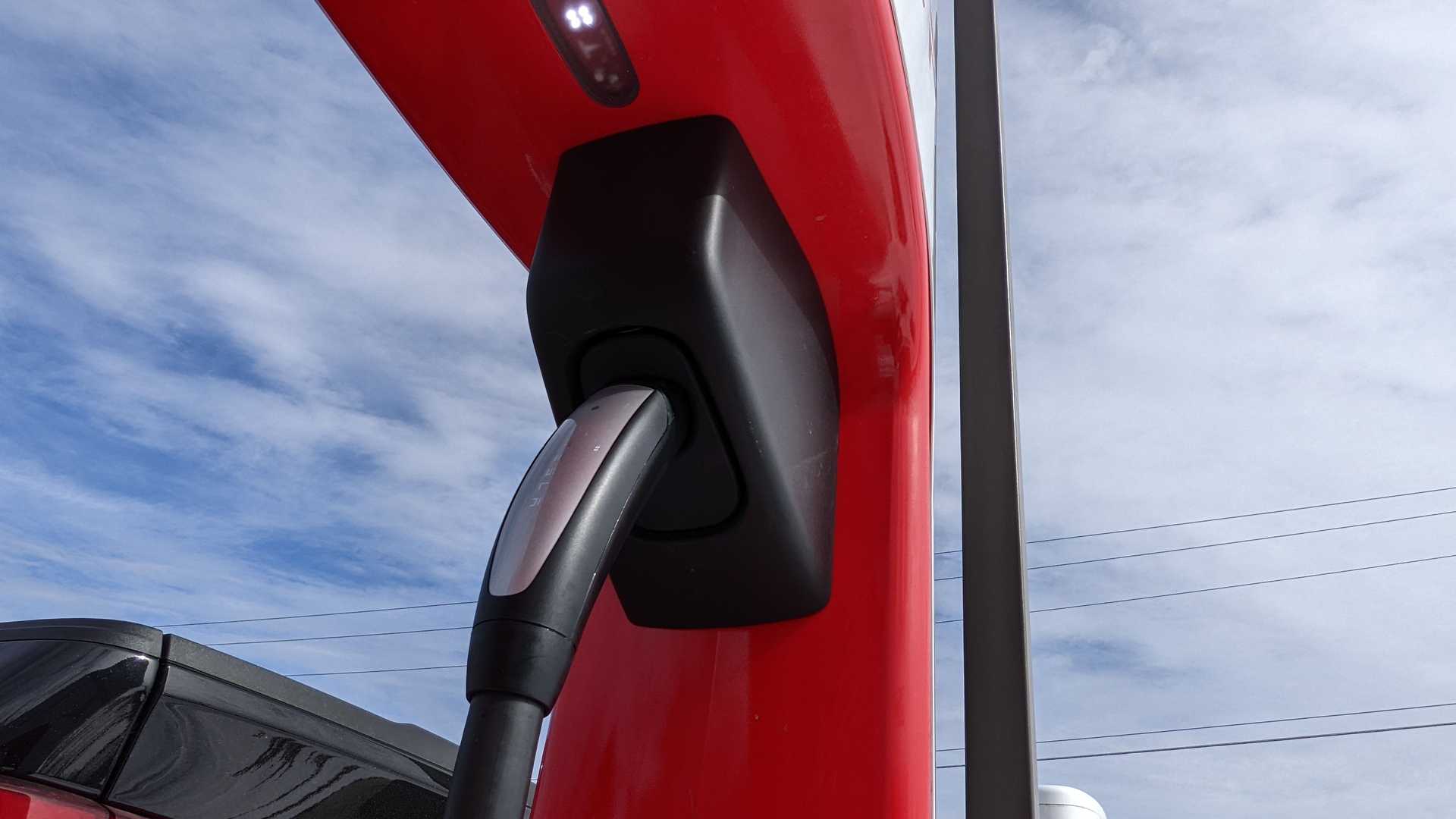
Tesla has installed the first Supercharger stalls equipped with the so-called Magic Dock connector which offers both a NACS and a CCS connector in the state of Texas, according to the Twitter user @jaredcs, who posted several photos of the new chargers.
As per the Twitter post, the expansion occurred in Eastchase Fort Worth, Texas, where the installers used a rented Ford F-150 Lightning all-electric pickup to test the CCS functionality. Furthermore, @jaredcs said he spoke with the workers, who explained that the upgraded site is yet to be officially online – something we verified on Tesla’s official website and found to be true.
Currently, the section that reads “Superchargers Open to Non-Tesla” only shows 11 stations country-wide, with nine in the state of New York and two in California – a situation that’s been unchanged for six months.
The American EV brand announced its CCS-compatible public chargers in March but has been very slow to ramp up their availability. However, now it seems that the Elon Musk-led company is finally kicking things into high gear, possibly encouraged by the multitude of car makers that made deals with Tesla to gain access to its 12,000+ network of fast chargers in North America.
The agreements made by Ford, General Motors, Rivian, Volvo, Polestar, Nissan, Mercedes-Benz, and others specify that from 2024 they will offer NACS to CCS1 adapters that can be used at Tesla’s Superchargers. Then, from 2025, vehicles made for the North American market will get the NACS connector from the factory, doing away with the adapters.
With this being said, it’s unclear how the Austin-based maker of the Model Y all-electric crossover will manage the shift from an exclusive charging network to a system that’s open to everybody.
In related news, a report from MarcoRP, which tracks the latest charging news, says that Tesla’s upcoming Supercharger V4 stall will be capable of providing 350 kilowatts of power instead of the currently available 250 kW in the V3 version. Furthermore, V4 will reportedly get a built-in CCS1 adapter.
As always, let us know what you think about this, so head over to the comments section below to give us your thoughts.

